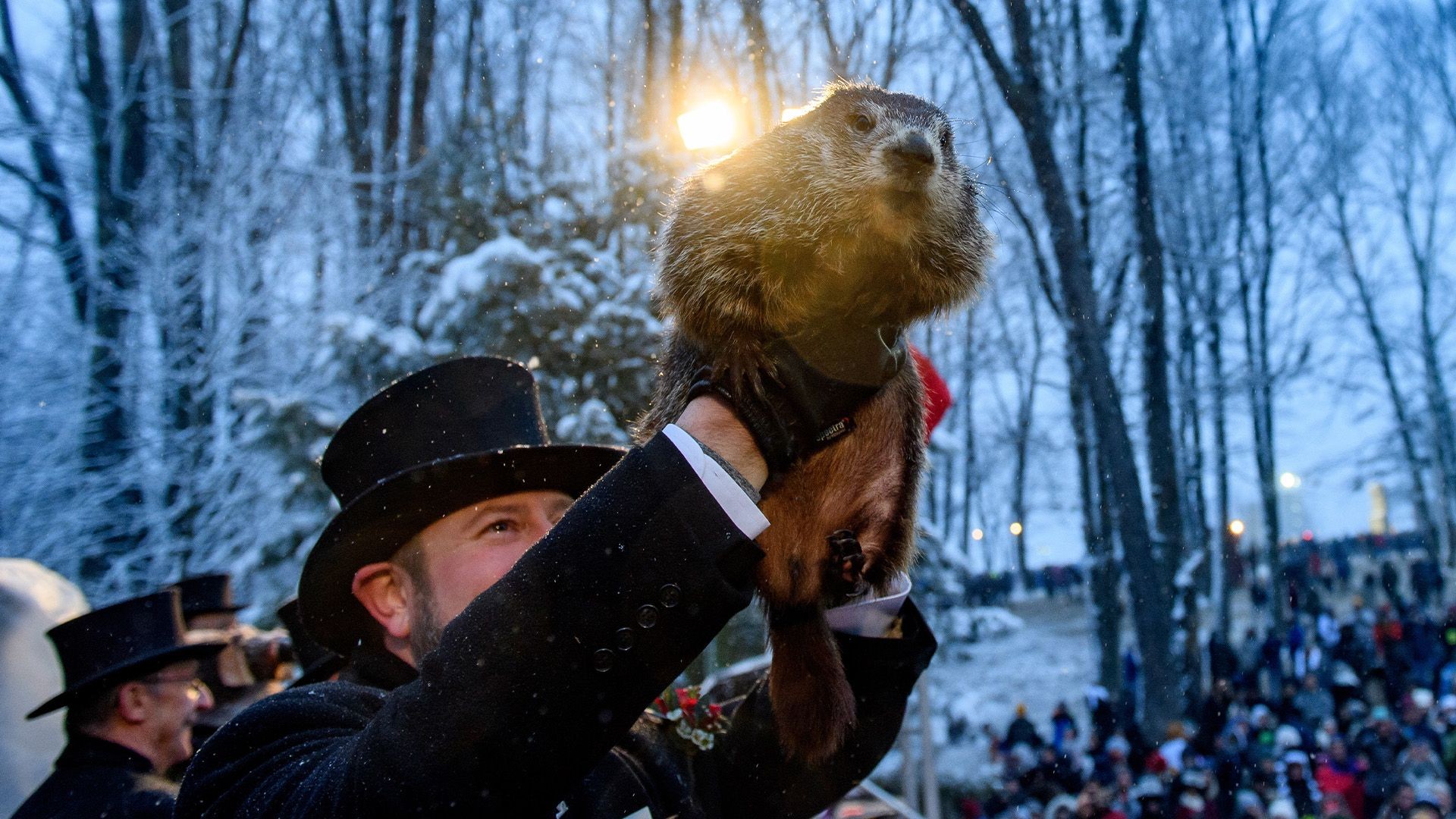Groundhog Day, observed annually on February 2nd in the United States and Canada, is a unique tradition centered around predicting the arrival of spring. This day hinges on the behavior of a groundhog, also known as a woodchuck, as it emerges from its winter burrow. According to folklore, if the groundhog sees its shadow due to sunny skies, it will retreat back into its burrow, and winter will persist for six more weeks. Conversely, a cloudy day suggests that the groundhog will not see its shadow, indicating an early spring.
This intriguing custom, falling midway between the winter solstice and the spring equinox, has deep roots in ancient celebrations. Many cultures have long recognized this time of year as significant. For the Celts, it marked Imbolc, a festival anticipating new life and the coming planting season. Interestingly, February 2nd also aligns with Candlemas, a Christian holiday commemorating the purification of the Virgin Mary.
 Punxsutawney Phil, the famous groundhog, emerges to predict the weather on Groundhog Day, a tradition held every February 2nd.
Punxsutawney Phil, the famous groundhog, emerges to predict the weather on Groundhog Day, a tradition held every February 2nd.
The weather-predicting animal tradition on this day can be traced back to the Middle Ages in Europe. During this period, it was believed that animals like badgers and bears would break their hibernation around February 2nd. If the day was sunny and the animal cast a shadow, it was interpreted as a sign of a prolonged winter. Cloudy skies, however, signaled milder weather and an approaching spring.
German immigrants brought this folklore to America, and in Pennsylvania, the groundhog became the animal of choice, replacing the badger in the tradition. This adaptation led to the most famous Groundhog Day celebration in Punxsutawney, Pennsylvania.
Since 1887, Punxsutawney has become synonymous with Groundhog Day. Punxsutawney Phil, the groundhog designated as the official weather prognosticator, is the star of a media spectacle every February 2nd. Despite claims of infallibility by festival promoters, historical analysis suggests that Punxsutawney Phil’s predictions are accurate less than 40% of the time. It’s worth noting that a groundhog’s emergence, or lack thereof, is likely more related to its fat reserves than meteorological acumen.
While Punxsutawney Phil is the most famous, Canada also boasts its share of weather-predicting groundhogs. Perhaps the most well-known Canadian groundhog is Wiarton Willie, an albino groundhog who has been making his predictions in Wiarton, Ontario, since 1956.
Groundhog Day, therefore, is more than just about weather forecasting; it’s a blend of cultural history, folklore, and tradition. It represents a symbolic marking point in the year, a hopeful glance towards the end of winter and the promise of spring, deeply embedded in both American and Canadian culture.